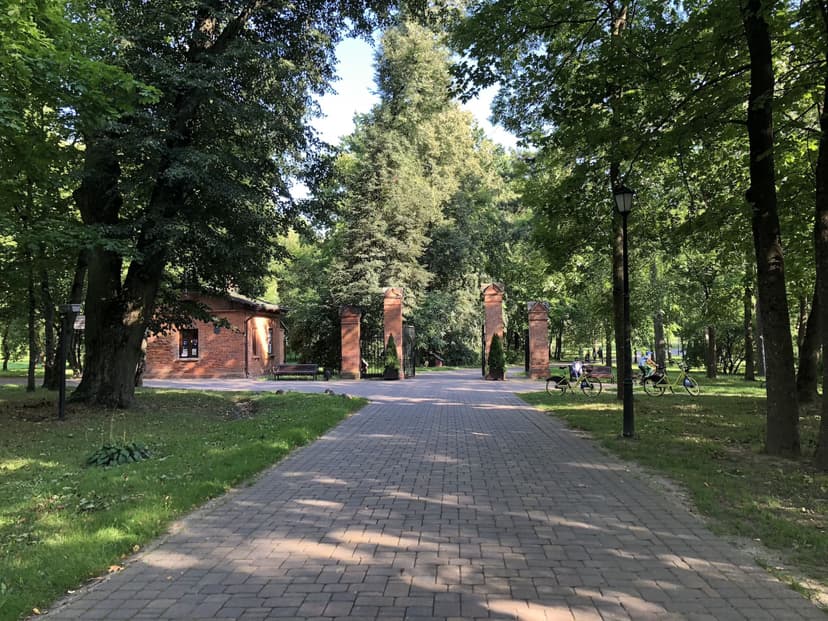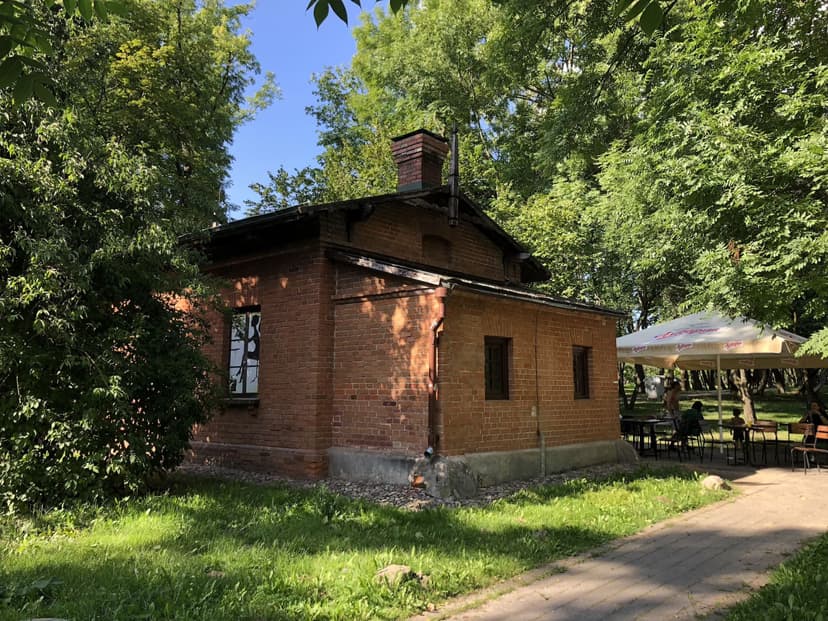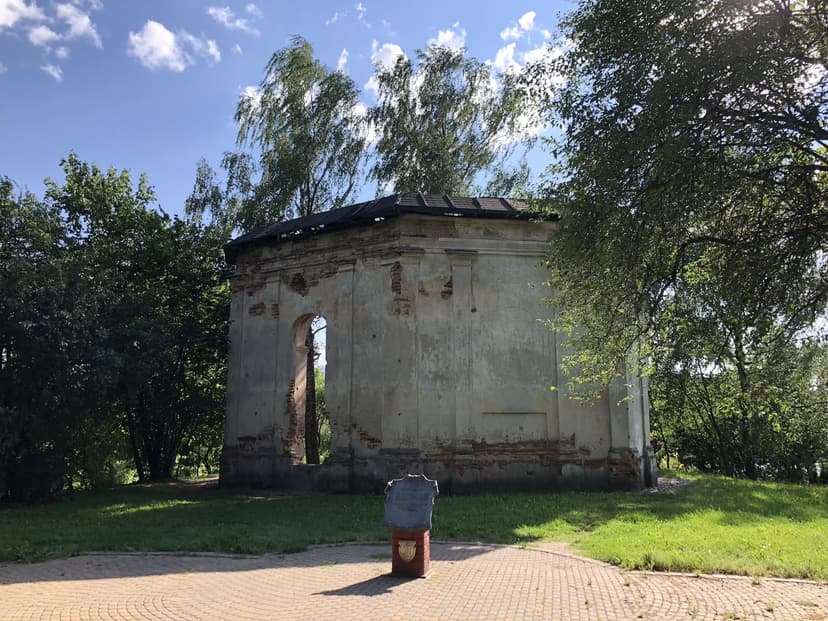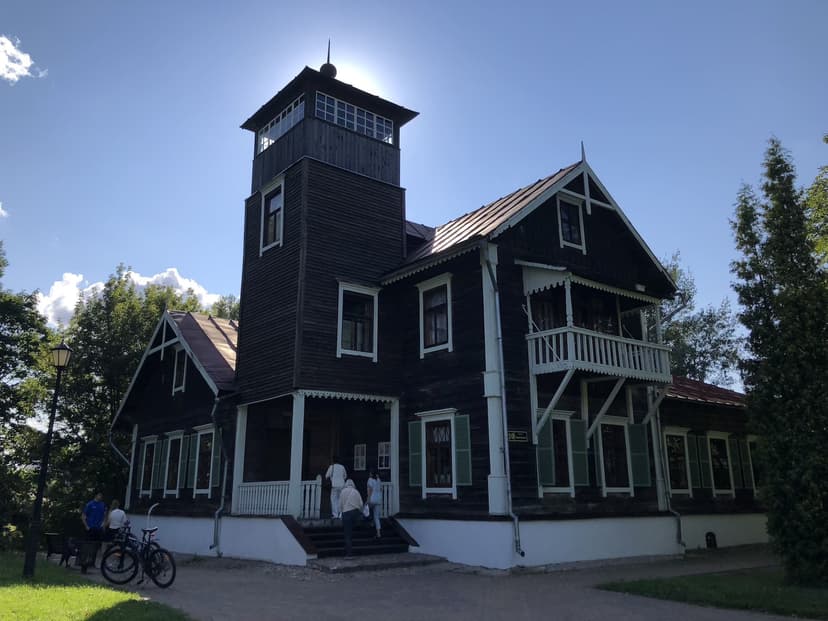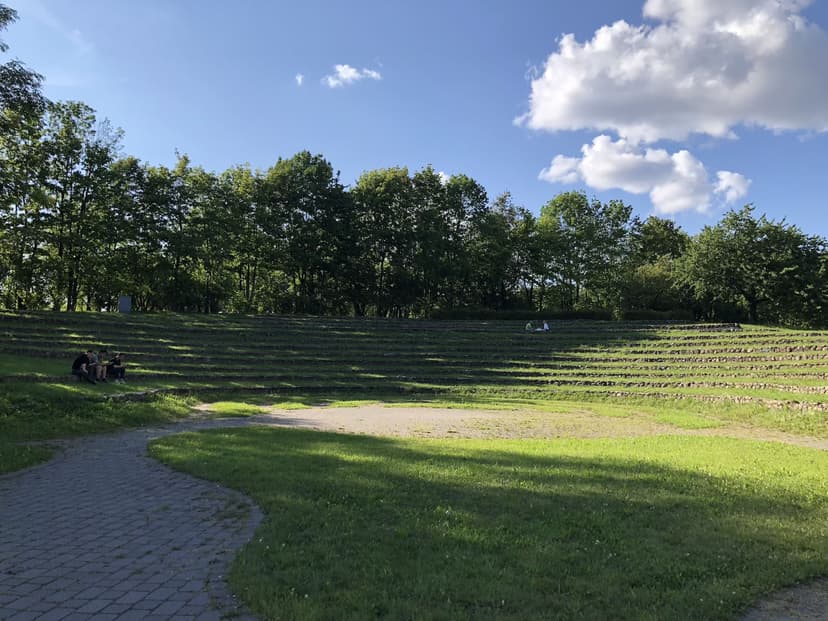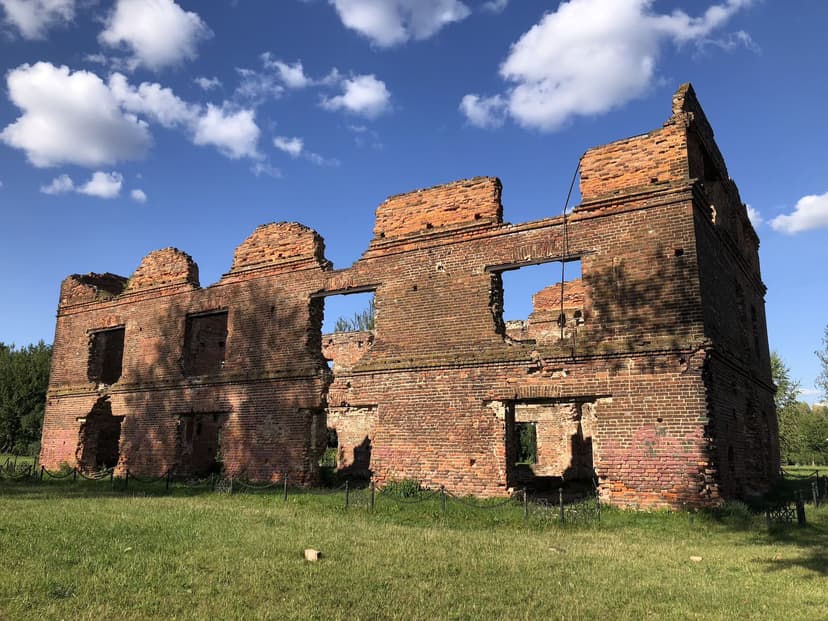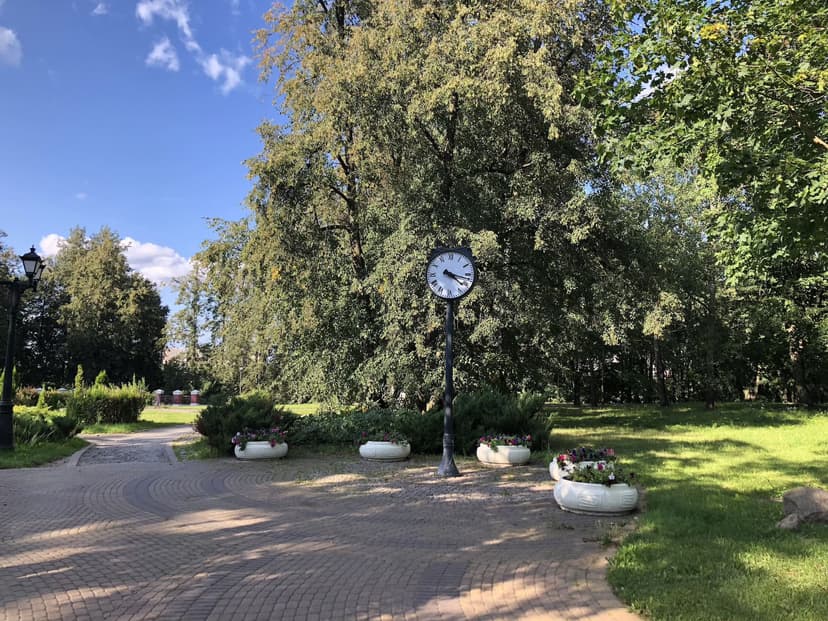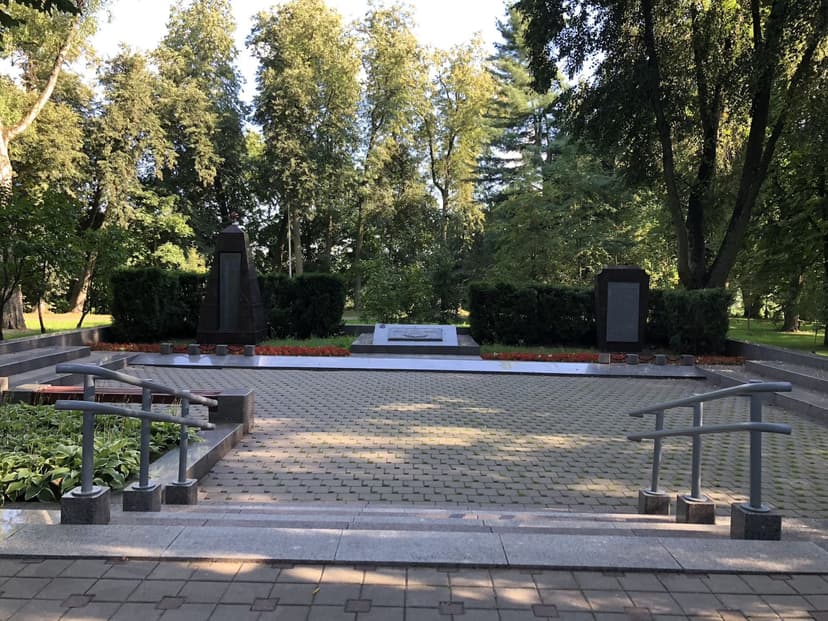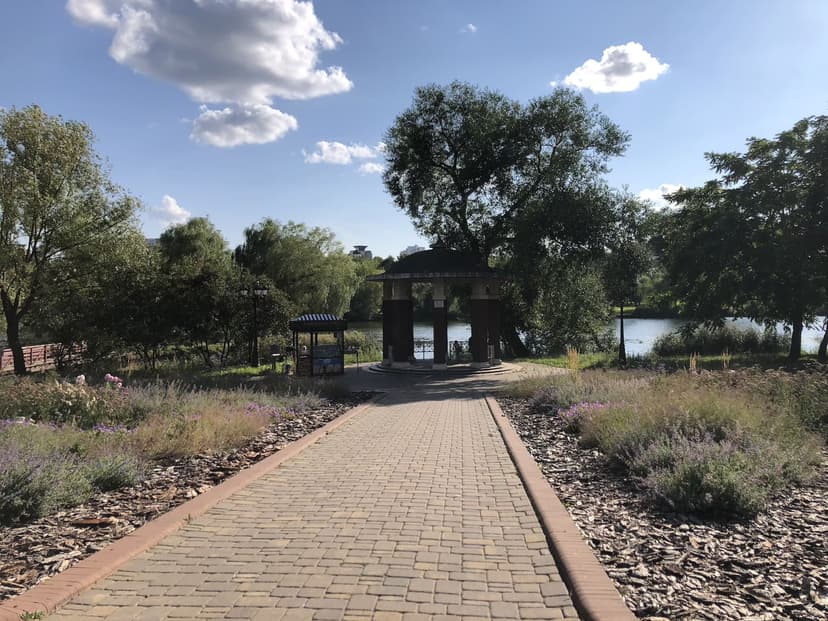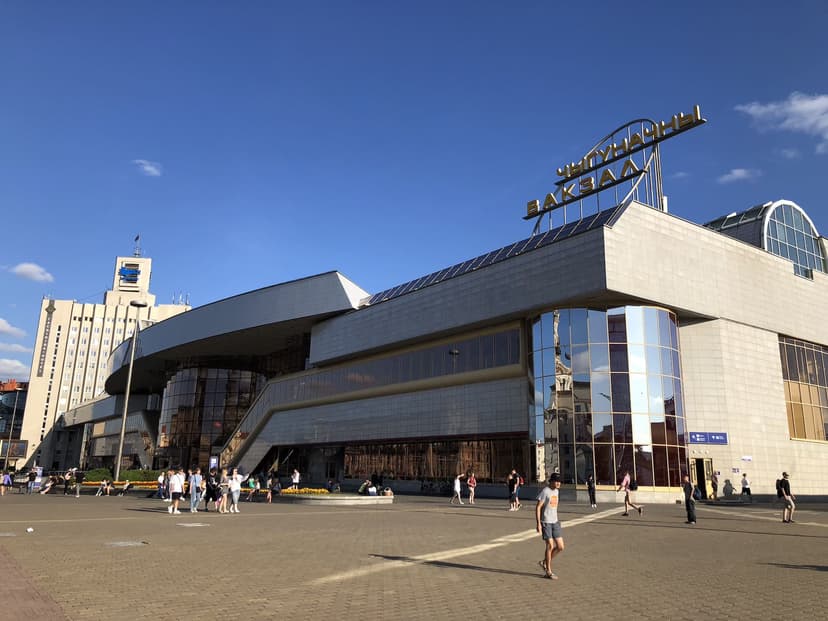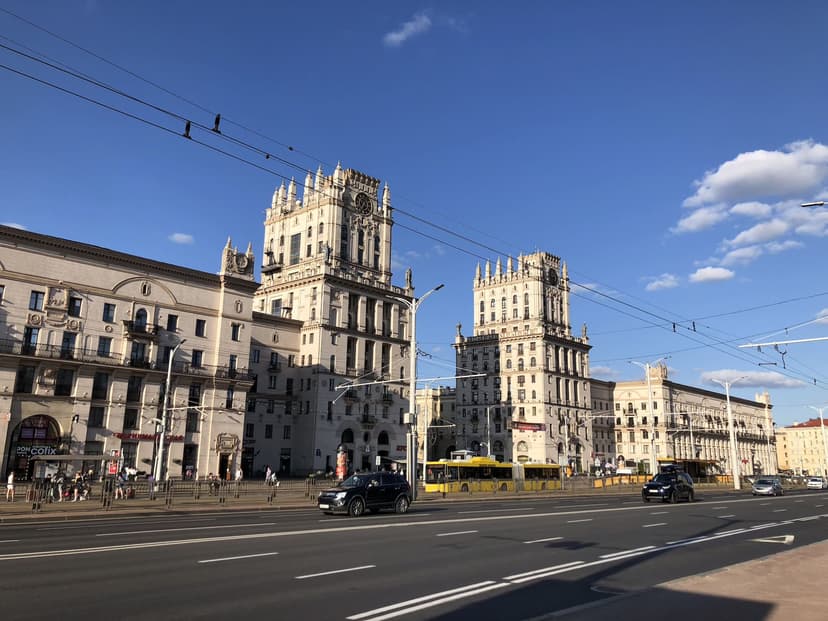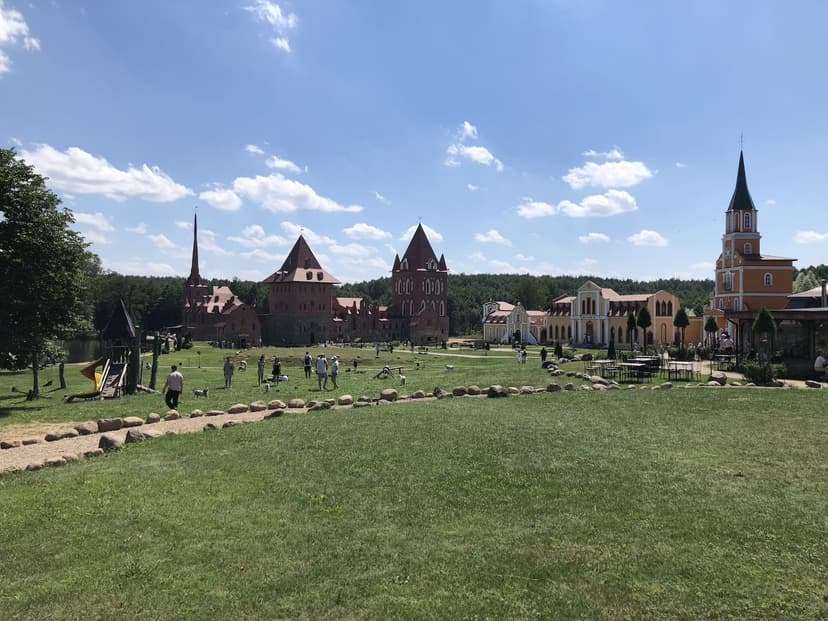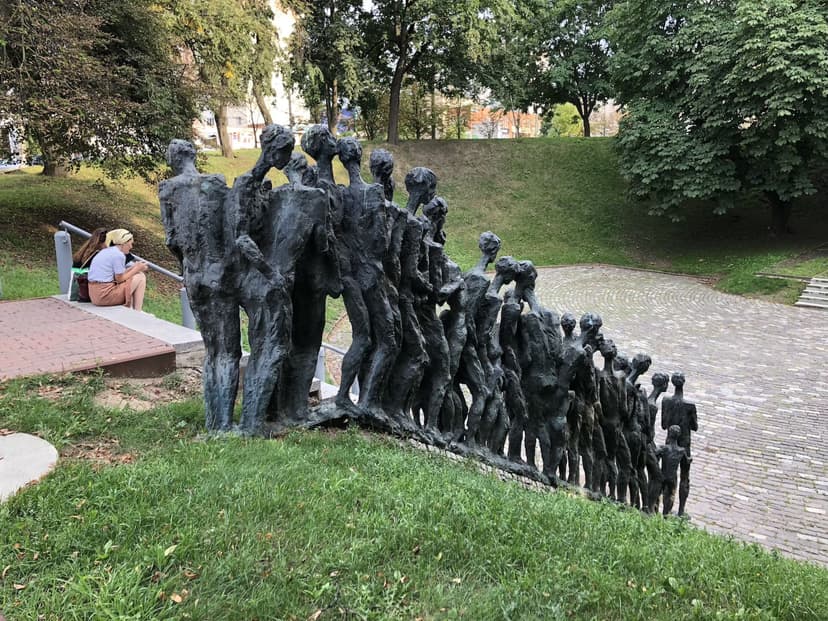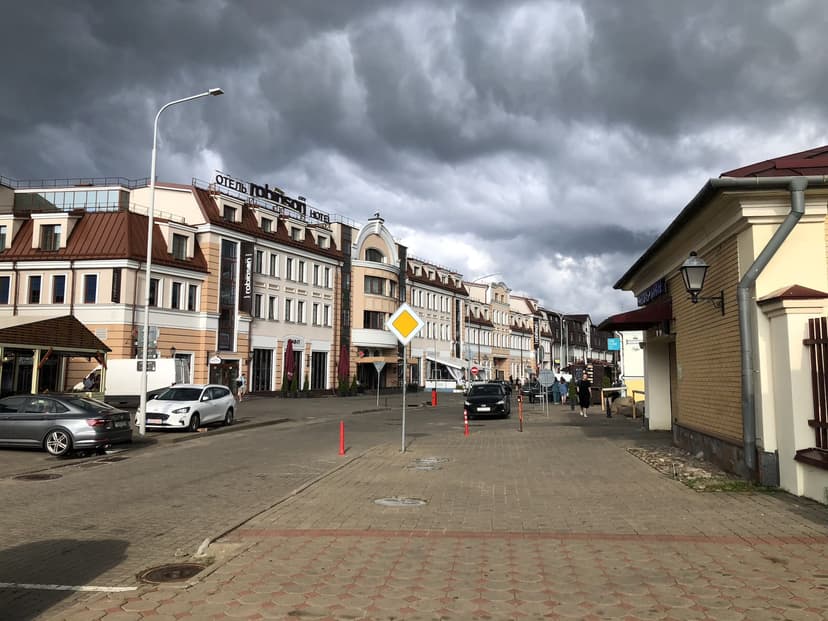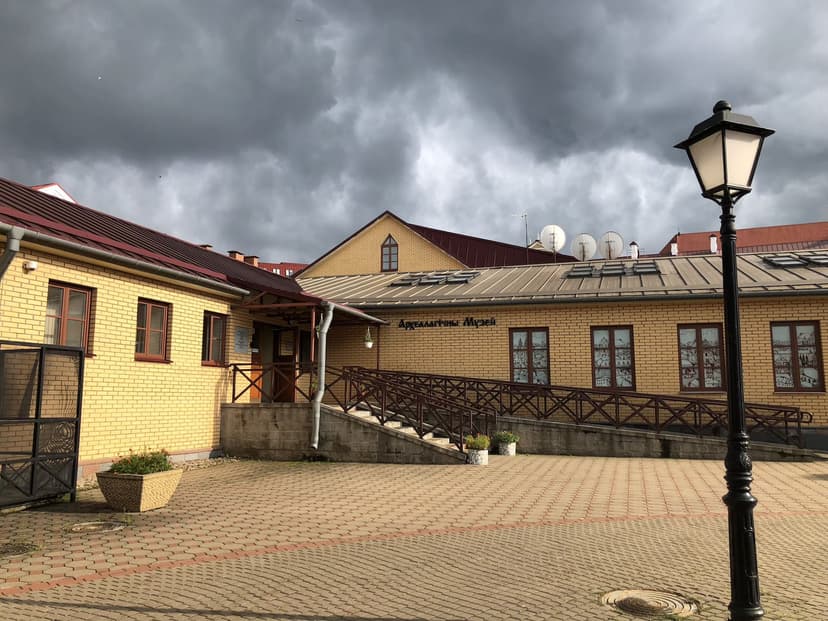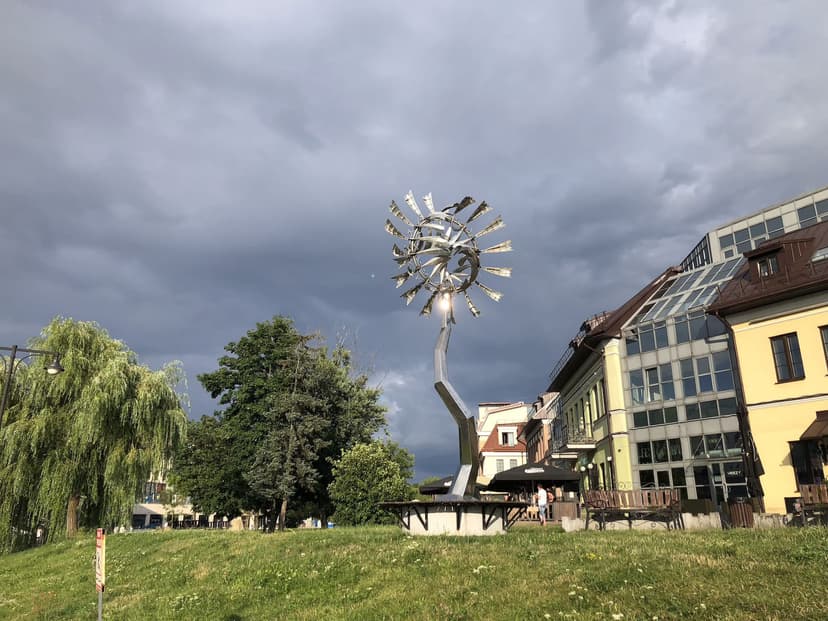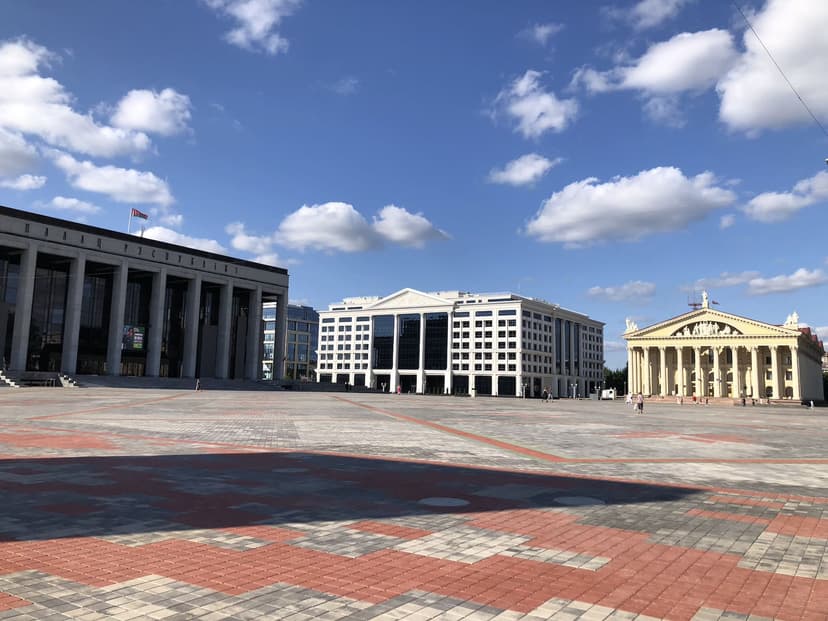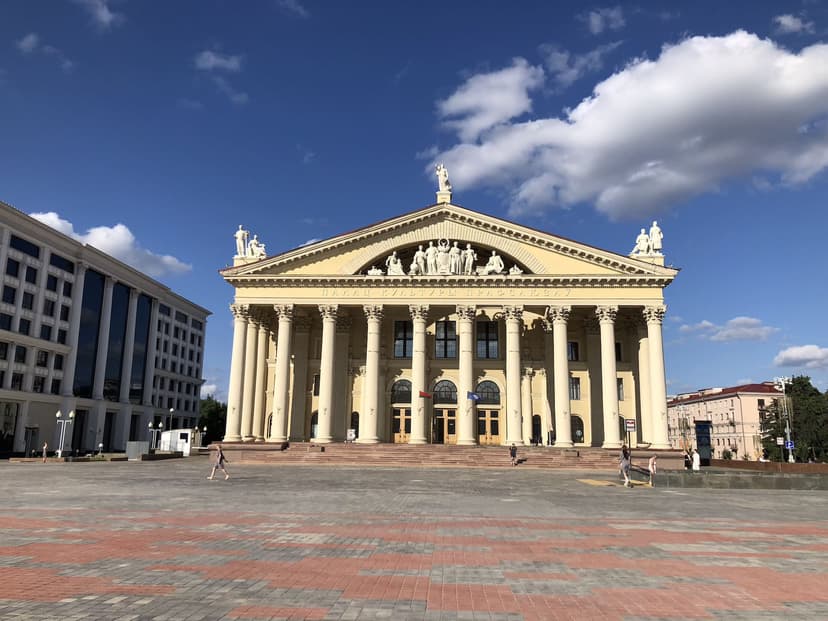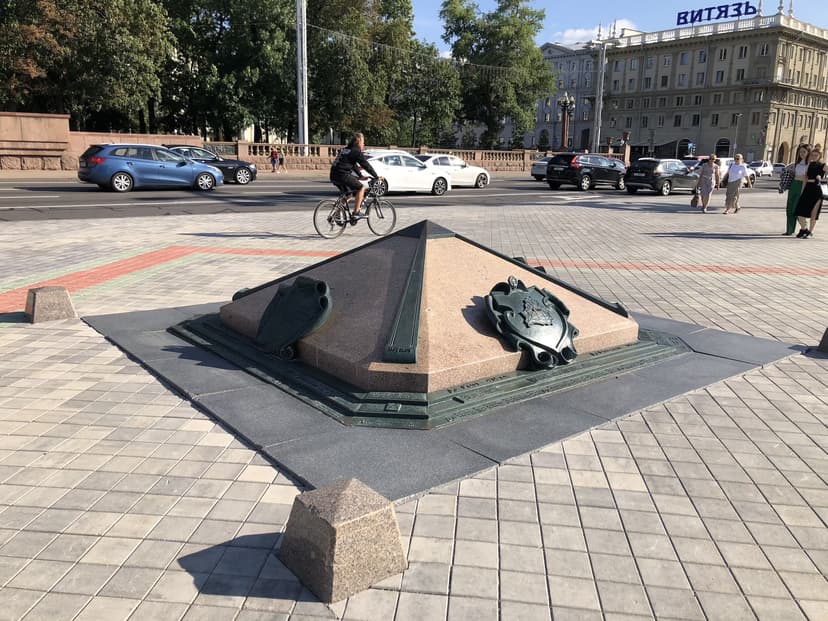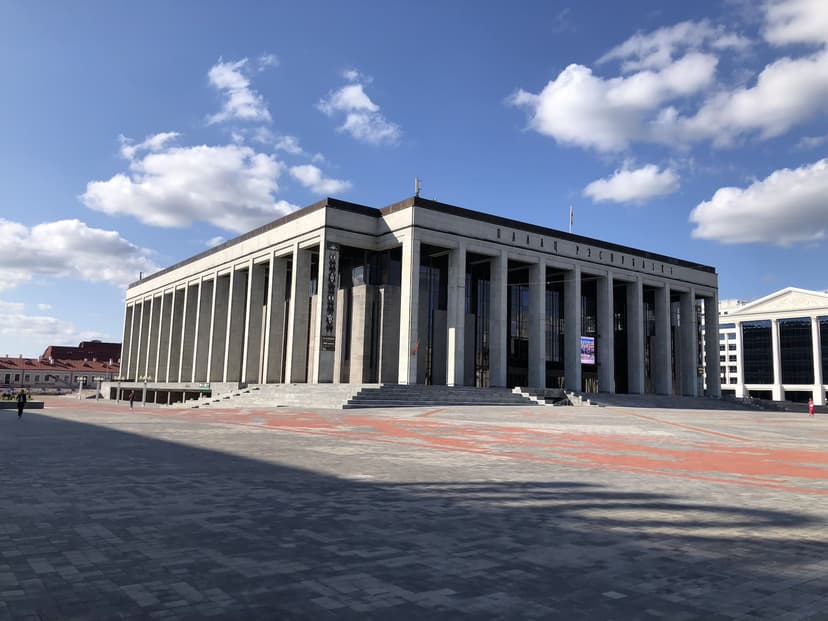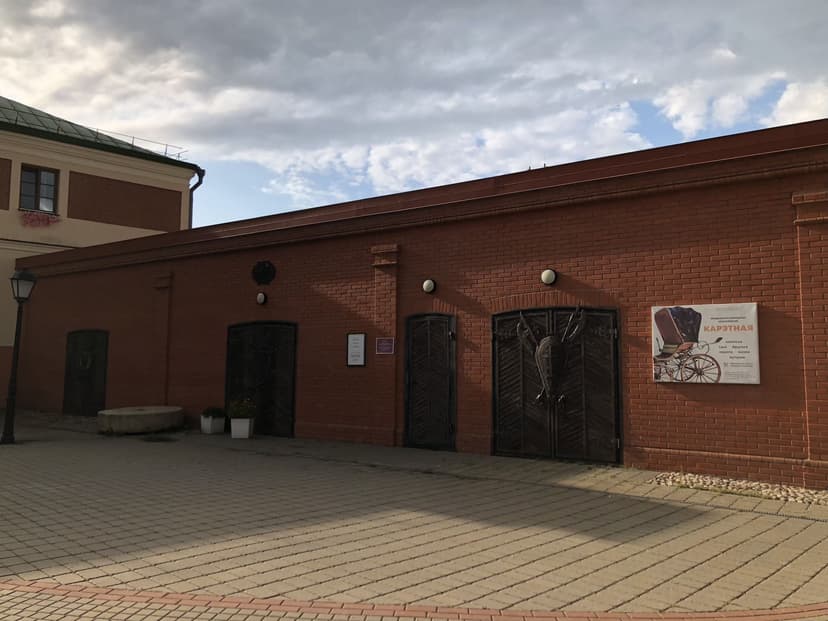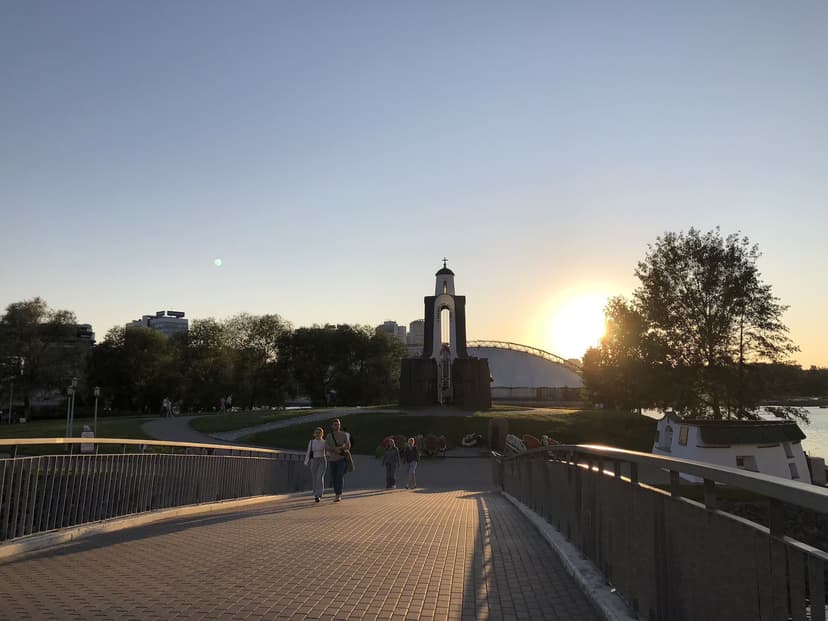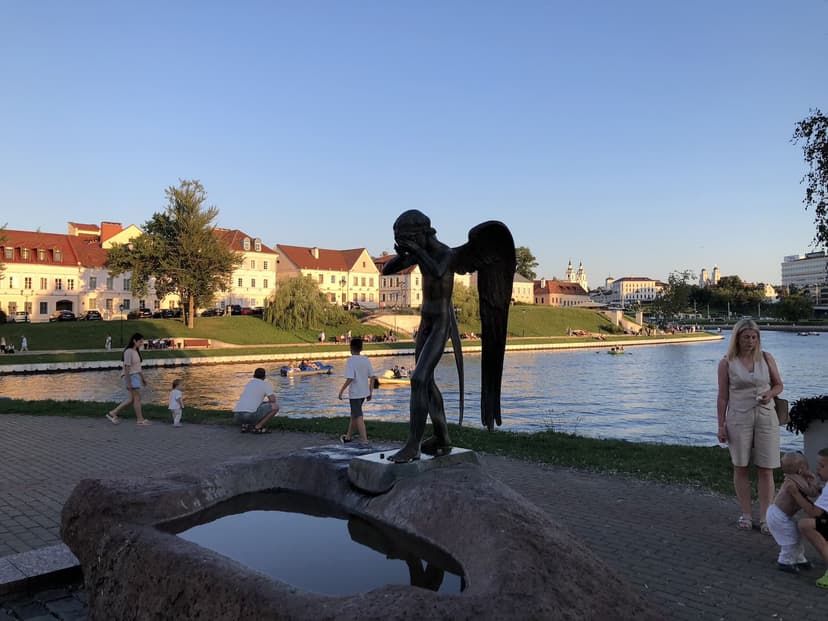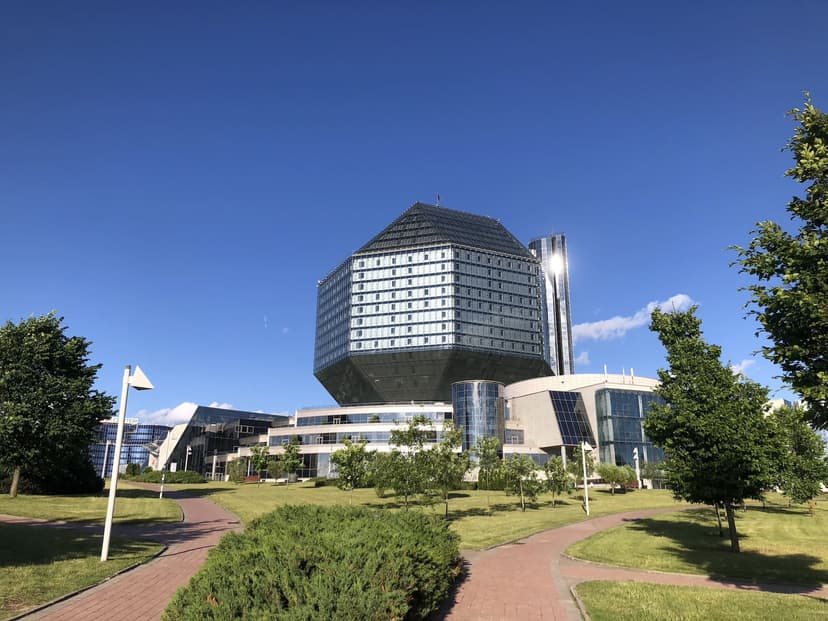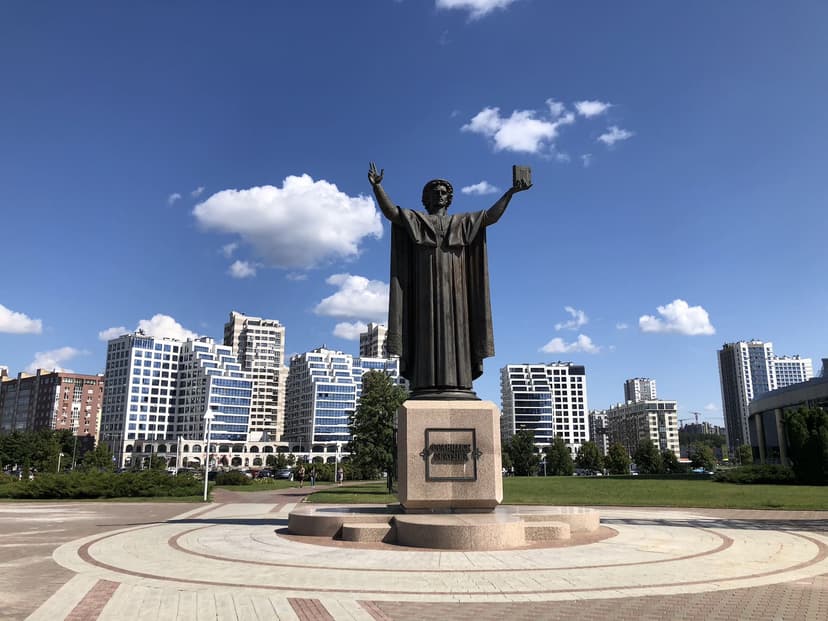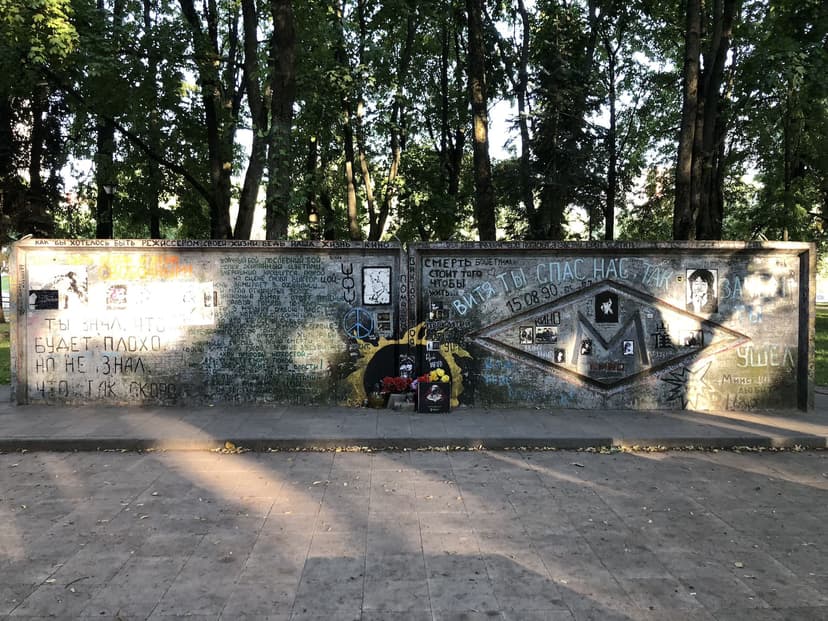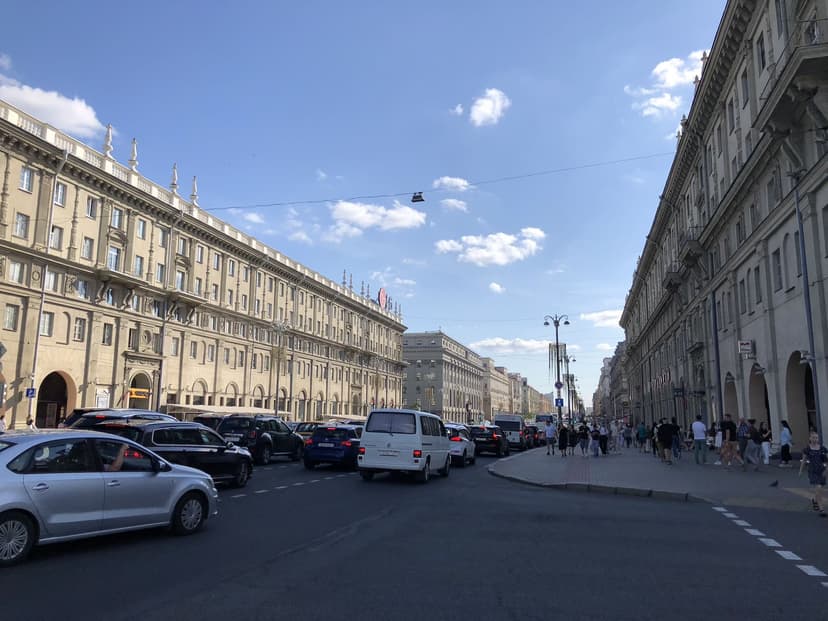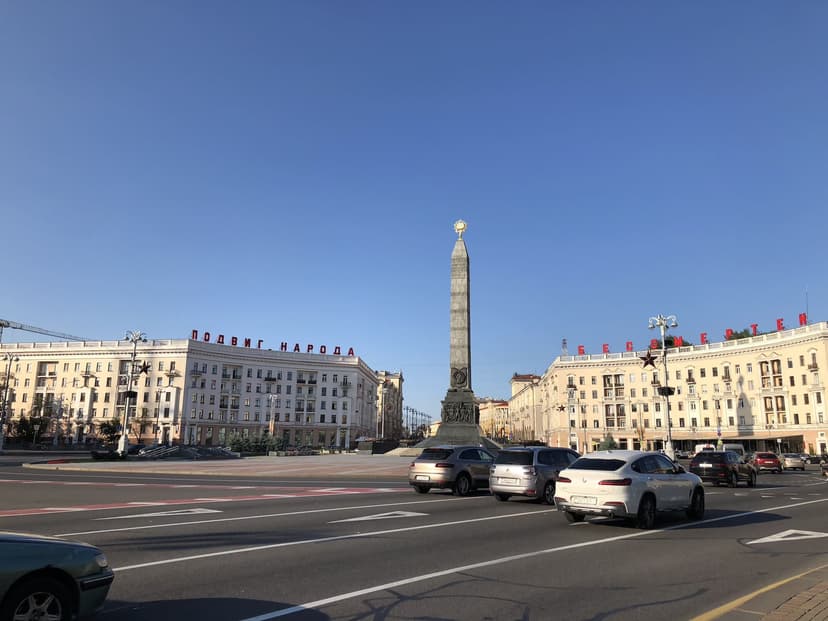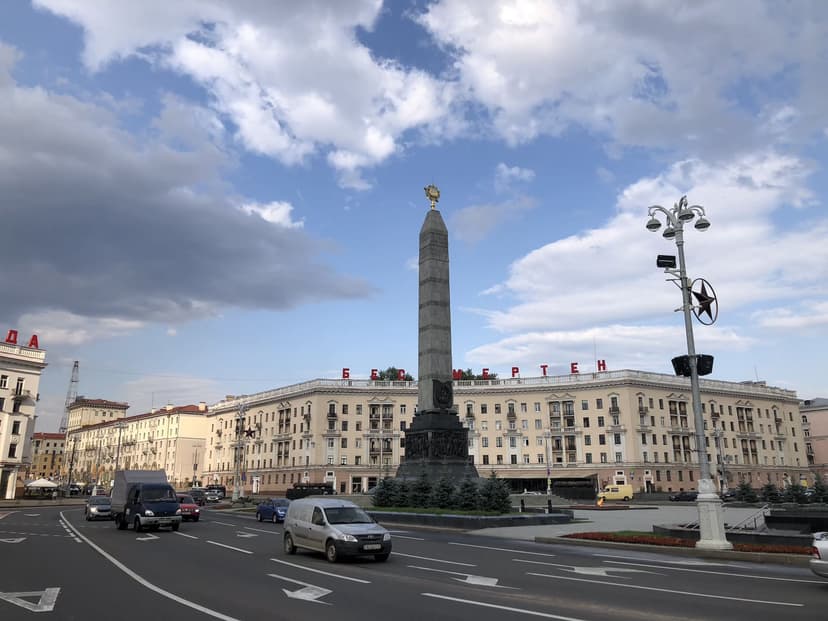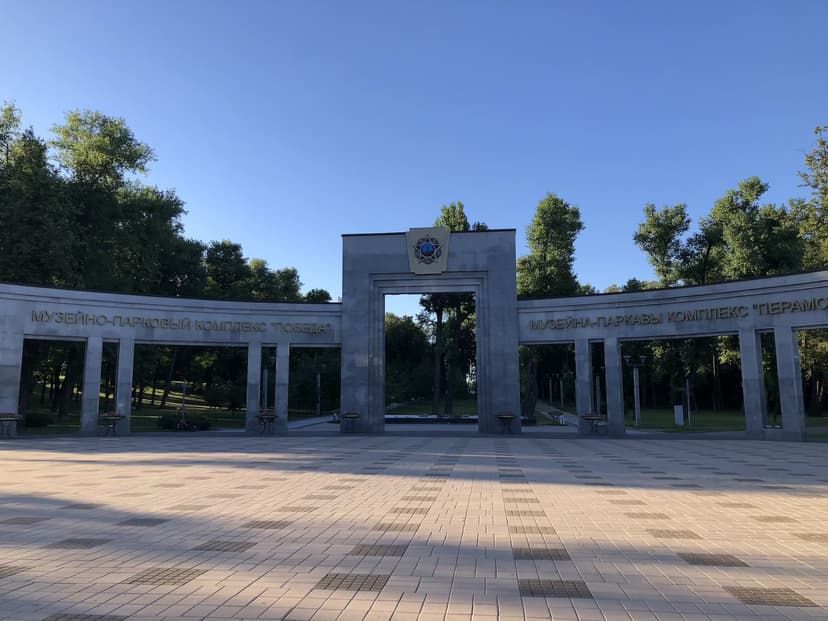Sights in Minsk

Bernardine Monastery in Minsk is a historic architectural monument of the 17th century, located in the Upper Town on Liberty Square next to the town hall and the trade rows. Founded in 1624 at the initiative of stewards Andrey... read more
Бывший Костёл св. Иосифа. Архив., 4
Entrance Alley of the Loshitsa Estate is a magnificent beginning to exploring this historic park, which has witnessed numerous events over two centuries. The alley, adorned with luxurious linden trees, was planted in the late 18th century by the Prushinsky family. According to legend, the road was paved with stones, creating an impressive atmosphere reminiscent of the time when travelers, unaware of... read more
Главная историческая аллея, Лошица
The Gatekeeper's House is a historic building in the Loshitsa estate, now transformed into an atmospheric cafe. The cafe offers not only delicious snacks and refreshing drinks but also wonderful ice cream that is perfect for warm days. The summer terrace provides more seating than the cozy indoor hall, making it an ideal place to... read more
Дом сторожа, 12
Prushinsky Chapel-Tomb — These are majestic ruins located in Loshitsky Park in Minsk. Built in 1788 in the Vilnius Baroque style, the chapel initially served not only as a place of worship but also as a family tomb for the Prushinsky family, who owned the estate from the early 18th century until the second half of the 19th... read more
Часовня-усыпальница Прушинских, Главная историческая аллея
Wing, built in 1895 on a stone foundation, is a unique part of the historical and cultural heritage of the Loshitsa estate park in Minsk. The wooden building with a turret served various functions: it housed servants, stored supplies, and prepared food for the owners of the estate. Inside the wing, there is an exhibition called “The Wheel of Time,” which showcases objects of urban and rural culture... read more
дом управляющего, 10
Landscape Amphitheater in Loshitsky Park is a unique place where nature and culture merge into one, creating ideal conditions for relaxation and events. This picturesque corner of Minsk recreates the atmosphere of ancient Rome, where you can feel like you are at the center of events, sitting among the audience rows with a view of the surrounding natural... read more
Ландшафтный амфитеатр, Мельничная дорога
In the heart of the picturesque Loshitsky Park stands one of the oldest and most significant structures – the watermill, built in 1901 by master Evstafy Lyubansky. This mill, now a cultural heritage site, not only immerses visitors in the atmosphere of the past but also draws attention with its unique architecture and... read more
Мельница, Мельничная дорога
Clock Square in Loshitsky Park is a key point of the new part of the park, from which alleys radiate in different directions, resembling the hands of a clock. The central park clock here doesn’t always work accurately, but it serves as a popular meeting place and date spot. Massive boulders are located around the square — a reminder of the ancient settlements from the 11th-12th and 17th-18th... read more
Мельничная дорога, Лошица
The military burial site in Loshitsky Park is dedicated to the heroes who liberated Minsk in 1944. A monument here honors soldiers of the Soviet Army, partisans, and 70 peaceful residents of Loshitsa who perished in the fight against fascism. The central element of the memorial is a marble obelisk, surrounded by a well-maintained area. The names of fallen heroes are engraved on a granite stele,... read more
Памятник воинам и партизанам, погибшим при освобождении Минска в 1944 г.
On the picturesque embankment of Loshitsky Park, among the greenery and shady alleys, stands an elegant rotunda that has become the highlight of this corner of nature. The structure is located right by the water, next to a recently created artificial island connected to the shore by a wooden bridge. This place attracts passersby with its aesthetics and the opportunity to relax while enjoying the... read more
Главная историческая аллея, Лошица
Railway Station Minsk-Passenger (Belarusian: Мінск-Пасажырскі) is the main passenger railway station in Minsk, located between the stations Minsk-North and Minsk-South. The station was opened in 1871 and has since become an important transport hub connecting the capital of Belarus with other cities in the country and abroad. Its modern appearance was formed as a result of reconstruction completed in 2000, designed by architects Viktor Kramarenko and Mikhail... read more
Минск-Пассажирский, 5
In the very heart of the Belarusian capital, opposite the train station, rise two majestic eleven-story towers known as Gates of Minsk. These architectural gems, built in 1953 according to the design of Leningrad architect Boris Rubanenko, represent a vivid example of Stalinist classicism. They not only complete the architectural ensemble of the square but also symbolize the post-war revival and... read more
Ворота Минска, улица Кирова
Park-Museum "Sula" is a unique complex that offers visitors the opportunity to immerse themselves in the history of Belarus. It is located on the site of the once-famous Radziwill estate and is the first park in the country that combines interactive exhibits and educational programs. Here, guests can see how their ancestors lived, from ordinary people to nobility, and learn about the culture and traditions that have developed over the... read more
Парк Истории «Великое княжество Сула», 14
The "Pit" Memorial, located on Melnikayte Street in Minsk, is dedicated to the victims of the Holocaust, particularly the prisoners of the Minsk Ghetto, who were massacred by the Nazis on March 2, 1942. About 5,000 Jews were shot at this site, including children from a Jewish orphanage who, along with their caretakers, were buried alive in a large pit. This memorial has become a symbol of tragedy and a reminder of the horrific events that took place during World War... read more
Мемориал «Яма» (обелиск), улица Мельникайте
Zybitskaya Street in Minsk is a vibrant and lively place, known for its rich atmosphere and numerous bars and cafes. With its rich history dating back to the 16th-17th centuries, this street was originally a center of trade. However, since 2013, it has begun transforming into a cultural and entertainment hub where people gather for socializing, fun, and... read more
Зыбицкая улица, Верхний город
The exhibition "Minsk. Upper City. Archaeological Museum" is housed in a building constructed over archaeological excavations conducted in 2007-2008. This museum offers a fascinating window into the history of Minsk, revealing the city's rich heritage through discovered... read more
Археологический музей, улица Герцена
In 2018, a unique metal sculpture "Cornflower" was installed on Zybitskaya Street in Upper Town of Minsk, gifted to the city by the engineering company EnCata for the City Day. This five-meter art object, symbolizing the cornflower—one of the main symbols of Belarus—is made of 16 aluminum blocks, each with three... read more
Василёк, улица Кирилла и Мефодия
October Square, also known as Kastrychnitskaya Square in the Belarusian language, is one of the most significant squares in the center of Minsk. It is located in the Central District of the city, bordered by Independence Avenue, Engels Street, and Internatsionalnaya Street. Along the square are important administrative and cultural buildings, such as the Palace of the Republic, the Palace of Culture of Trade Unions, the Minsk Regional Executive Committee building, and RUE "Beltelecom."... read more
Дворец Республики, 1
Palace of Culture of Trade Unions (Belarusian: Палац культуры прафсаюзаў) in Minsk is a significant cultural center that has served as a venue for various events for decades. Officially opened on July 3, 1956, this cultural house is located in the heart of the Belarusian capital, at Independence Avenue, 25, near October Square and the Oktyabrskaya metro station. The building was designed by architect... read more
Дворец культуры профсоюзов, 25
Zero Kilometer of Belarus is a commemorative sign that symbolizes the starting point of all roads in the Republic of Belarus. It is installed in the center of Minsk on October Square and represents a granite pyramid adorned with bronze cartouches and medallions. This monument was erected in 1998 during the reconstruction of the square and has become a symbol of the country's transportation system,... read more
Начало дорог Беларуси, проспект Независимости
Palace of the Republic (Belarusian: Палац Рэспублікі) is one of the main cultural and business buildings in Minsk, located on October Square. This majestic complex plays an important role in the cultural life of Belarus, providing a venue for various events, ranging from concerts and conferences to official receptions and film festivals. Construction of the Palace of the Republic began in 1985 and... read more
Дворец Республики, 1
Carriage Museum in Minsk is a small but interesting place that immerses visitors in the history of transportation during the Minsk gubernia period. The exhibition, opened in 2014, is located on the grounds of the former Bernardine Monastery and occupies only one hall. Authentic exhibits are displayed here, including phaetons, carriages, sleighs, and carts, as well as elements of horse harnesses and... read more
Монастырский, 6
The memorial complex "Island of Courage and Sorrow," also known as "Island of Tears", is located in the very center of Minsk, on an artificial island in the Svisloch River, near the Trinity Suburb. This memorial is dedicated to Belarusian internationalist soldiers who died in Afghanistan during the Soviet-Afghan War from 1979 to 1989. Of the more than 30,000 Belarusians who participated in the... read more
Часовня-памятник «Сыновьям Отечества, погибшим за его пределами»
The "Crying Angel" sculpture composition on Island of Tears in Minsk is an outstanding memorial dedicated to the memory of Belarusian soldiers who fell during the war in Afghanistan (1979-1989). This poignant monument was established on the "Island of Courage and Sorrow" in 1996 and has become a symbol of inconsolable grief and remembrance of the fallen warriors. The complex is located on a small... read more
Плачущий ангел-хранитель, Горбатый мост
National Library of Belarus (NLB) is the main scientific and cultural center of the country, as well as the largest repository of books and documents. It was founded in 1922 as the library of the Belarusian State University (BSU), but a few years later became an independent institution. Throughout its history, the library has developed and expanded, becoming one of the most significant cultural institutions in... read more
Национальная библиотека Беларуси, 116
Monument to Francysk Skaryna near the National Library of Belarus in Minsk is one of the most important cultural landmarks of the capital, attracting attention from both tourists and locals. This majestic six-meter bronze statue, weighing over five tons, was created by the Belarusian sculptor Alexander Dranets. The process of creating and installing the monument spanned several decades, starting with... read more
Франциск Скорина, проспект Независимости
The Tsoi Wall in Minsk is a symbolic memorial dedicated to the legendary Soviet rock musician Viktor Tsoi and his band "Kino". This monument is located in Lyakhovsky Square, near the "Pervomayskaya" metro station and the "Dinamo" stadium. The history of the Tsoi Wall began in 1990, shortly after the musician's death, when his fans started leaving inscriptions, quotes from songs, and drawings on the... read more
Стена Цоя, Ульяновская улица
Independence Avenue, the main avenue of Minsk, is a symbolic transportation artery of the Belarusian capital, running from the city center to the northeast. It stretches about 15 kilometers, making it one of the longest streets in Minsk and an important part of the city’s infrastructure. The avenue’s history began in 1801 when Zakharievskaya Street was laid out in place of the old city fortifications, named after Minsk’s governor, Zakhar Korenev. This street was the first route that... read more
проспект Независимости, Волоки Полоцкие
Victory Square in Minsk is one of the most iconic and historically significant squares of the city, located on Independence Avenue, the main artery of the Belarusian capital. It attracts attention from both locals and tourists due to its majestic monument, which symbolizes the victory in the Great Patriotic War and preserves the memory of the... read more
площадь Победы, Партизанский район
Victory Monument in Minsk – is a significant monument erected in memory of the Soviet people's victory over Nazi Germany during the Great Patriotic War. It is also dedicated to the heroism of the soldiers of the Soviet Army, partisans, and underground fighters who died for the freedom and independence of their homeland. This majestic obelisk, located at the intersection of Independence Avenue with Zakharov and Kiselev Streets, is an architectural and artistic symbol of Minsk, attracting... read more
Монумент Победы, площадь Победы
Museum and Park Complex "Victory" is one of the most famous places for recreation and cultural leisure in Minsk. It is located in the Central District of the city and covers an area of 200 hectares, making it the largest park in the Belarusian capital. The park was opened in 1945 in honor of the victory over Nazi Germany in the Great Patriotic War, and since then, its significance as a historical and cultural site has only... read more
Триумфальная Арка «Парк Победы», Канатный переулок


